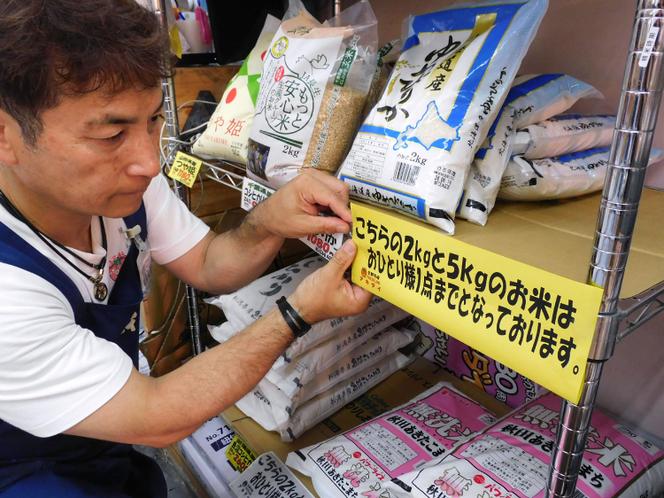


With empty shelves, online sellers unable to meet demand and a government adopting a wait-and-see approach, Japan is facing a rice shortage. This is shocking in a country that prides itself on covering 100% of its needs in this area, despite its food self-sufficiency rate, in caloric terms, not exceeding 38% in 2023. Several chains, starting with Ito-Yokado supermarkets, have even limited rice purchases to one packet per family.
However, the authorities are trying to be reassuring. "Rice has grown well in 2024. In some places, the harvest will start a week earlier than usual, so shipments should also begin earlier," said Agriculture Minister Tetsushi Sakamoto. "We need to be patient until the new rice arrives," added Yokado.
The Japanese are increasingly anxious, especially with the powerful Typhoon Shanshan, which prompted authorities to issue the highest alert level for winds and storm surges reaching the coast of Kyushu Island (southwest) on Wednesday, August 28. The typhoon could remain over Japan until September 4, threatening rice farming.
A disrupted harvest could exacerbate the crisis or even force the government to resort to imports or draw on its emergency reserves of 910,000 tonnes of rice, set up in 1993 after an abnormally cool summer affected rice growing.
This year, shortages have been looming since spring. According to the agriculture ministry, private sector stocks had fallen to 1.56 million tonnes in June, the lowest level since these statistics began in 1999 and down 20% on 2023. In July, the wholesale price reached 15,626 yen (€97.10) per 60 kg of rice, up 13% year-on-year.
At the same time, demand grew by 110,000 tons between June 2023 and June 2024, reaching 7.02 million tons. This marked its first increase in 10 years. The reason? The return of tourists after the pandemic. Japan welcomed 17.78 million foreign visitors in the first half of 2024, one million more than in the first half of 2019.
Another issue is inflation, causing Japanese consumers to increasingly turn to rice, which is "cheaper than other crops such as wheat," according to Hiroshi Itakura from the agriculture ministry.
Rice-growing is also subject to climate change. In 1993, it was too cold. Meanwhile, 2023 was marked by "considerably higher temperatures" than what was normal for the season, according to the Japan Meteorological Agency (JMA). The average temperature was 1.76°C above normal, a record – and this was accompanied by a severe rainfall deficit. However, rice exposed to high temperatures during the summer maturation period experiences a decline in quality.
You have 41.63% of this article left to read. The rest is for subscribers only.
